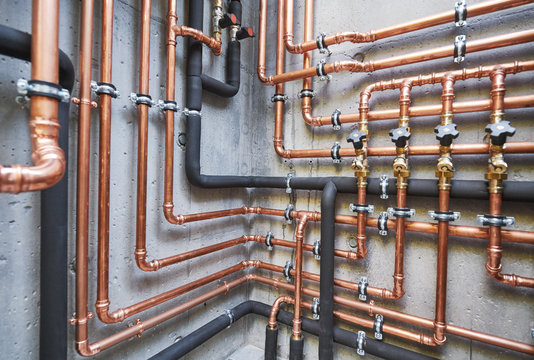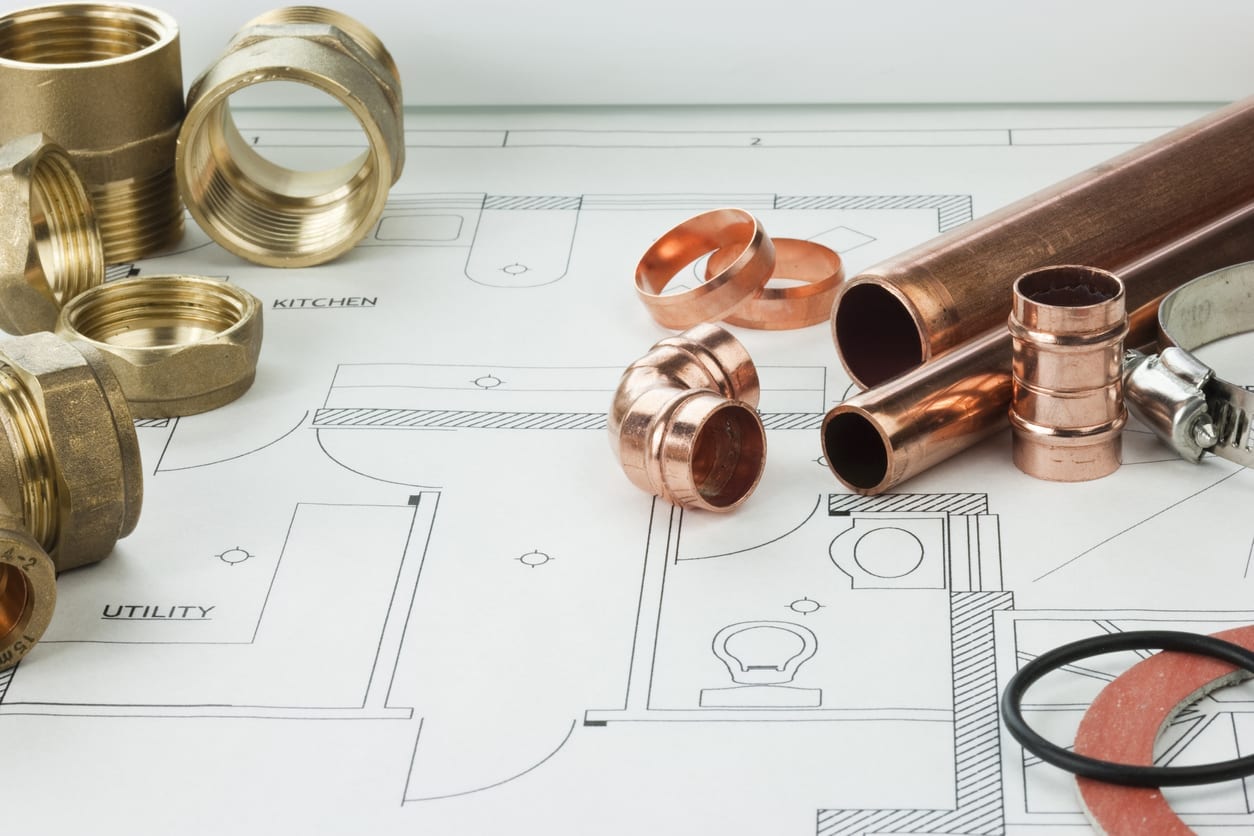How Your Home's Plumbing System Works: Design
How Your Home's Plumbing System Works: Design
Blog Article
Are you interested in critical information about Anatomy of a House: Understanding the Components?

Recognizing just how your home's pipes system functions is necessary for each house owner. From providing clean water for drinking, food preparation, and showering to safely getting rid of wastewater, a properly maintained pipes system is important for your household's health and wellness and comfort. In this comprehensive overview, we'll discover the elaborate network that makes up your home's pipes and deal ideas on maintenance, upgrades, and dealing with common problems.
Introduction
Your home's plumbing system is greater than simply a network of pipes; it's a complex system that guarantees you have accessibility to clean water and efficient wastewater elimination. Recognizing its elements and how they collaborate can aid you avoid costly fixings and make sure whatever runs smoothly.
Standard Components of a Pipes System
Pipelines and Tubes
At the heart of your pipes system are the pipes and tubing that carry water throughout your home. These can be constructed from numerous products such as copper, PVC, or PEX, each with its benefits in terms of sturdiness and cost-effectiveness.
Fixtures: Sinks, Toilets, Showers, etc.
Components like sinks, commodes, showers, and tubs are where water is used in your home. Recognizing just how these components link to the plumbing system aids in detecting issues and intending upgrades.
Shutoffs and Shut-off Points
Shutoffs manage the flow of water in your pipes system. Shut-off valves are critical during emergency situations or when you require to make repair work, enabling you to isolate parts of the system without interfering with water circulation to the entire home.
Water Supply System
Key Water Line
The major water line connects your home to the local water system or an exclusive well. It's where water enters your home and is distributed to different components.
Water Meter and Stress Regulatory Authority
The water meter actions your water usage, while a pressure regulatory authority guarantees that water moves at a risk-free stress throughout your home's pipes system, avoiding damage to pipelines and fixtures.
Cold Water vs. Hot Water Lines
Understanding the difference between cold water lines, which supply water straight from the main, and warm water lines, which lug heated water from the water heater, assists in repairing and preparing for upgrades.
Drainage System
Drain Pipeline and Traps
Drain pipes bring wastewater far from sinks, showers, and bathrooms to the drain or sewage-disposal tank. Catches protect against drain gases from entering your home and likewise trap debris that can trigger obstructions.
Ventilation Pipes
Air flow pipelines permit air into the drain system, protecting against suction that might slow down drainage and cause catches to vacant. Appropriate ventilation is essential for preserving the stability of your plumbing system.
Importance of Appropriate Drain
Guaranteeing correct drain avoids backups and water damage. Frequently cleaning up drains and maintaining traps can prevent costly fixings and expand the life of your pipes system.
Water Furnace
Sorts Of Hot Water Heater
Water heaters can be tankless or conventional tank-style. Tankless heaters heat water as needed, while containers save heated water for instant use.
Just How Water Heaters Attach to the Pipes System
Comprehending just how water heaters link to both the cold water supply and hot water circulation lines assists in diagnosing problems like insufficient warm water or leaks.
Upkeep Tips for Water Heaters
Frequently flushing your hot water heater to remove debris, checking the temperature level settings, and evaluating for leakages can extend its life-span and enhance power effectiveness.
Usual Plumbing Concerns
Leakages and Their Causes
Leakages can occur as a result of aging pipelines, loose installations, or high water pressure. Dealing with leakages immediately avoids water damage and mold development.
Obstructions and Obstructions
Blockages in drains and toilets are usually brought on by flushing non-flushable things or an accumulation of grease and hair. Using drain displays and bearing in mind what decreases your drains can prevent obstructions.
Indications of Plumbing Problems to Expect
Low tide pressure, slow drains pipes, foul odors, or uncommonly high water bills are indicators of prospective plumbing problems that ought to be attended to promptly.
Plumbing Upkeep Tips
Normal Inspections and Checks
Arrange yearly plumbing evaluations to capture concerns early. Look for indications of leakages, deterioration, or mineral buildup in faucets and showerheads.
DIY Maintenance Tasks
Straightforward tasks like cleansing tap aerators, checking for commode leaks utilizing color tablets, or protecting exposed pipes in chilly environments can avoid significant plumbing problems.
When to Call a Specialist Plumbing
Know when a pipes concern requires expert proficiency. Trying intricate repair work without proper understanding can bring about more damage and greater fixing costs.
Updating Your Pipes System
Factors for Upgrading
Upgrading to water-efficient components or changing old pipes can improve water high quality, lower water bills, and raise the worth of your home.
Modern Pipes Technologies and Their Advantages
Discover modern technologies like clever leakage detectors, water-saving commodes, and energy-efficient hot water heater that can save money and decrease ecological influence.
Price Considerations and ROI
Calculate the in advance expenses versus long-lasting cost savings when considering pipes upgrades. Several upgrades spend for themselves via minimized energy expenses and less repair work.
Ecological Effect and Conservation
Water-Saving Components and Appliances
Mounting low-flow taps, showerheads, and toilets can significantly decrease water usage without giving up performance.
Tips for Lowering Water Usage
Simple behaviors like repairing leaks immediately, taking shorter showers, and running complete tons of laundry and meals can conserve water and reduced your energy bills.
Eco-Friendly Pipes Options
Think about sustainable pipes products like bamboo for flooring, which is durable and eco-friendly, or recycled glass for kitchen counters.
Emergency Preparedness
Actions to Take During a Plumbing Emergency situation
Know where your shut-off shutoffs are located and just how to shut off the supply of water in case of a burst pipe or major leak.
Relevance of Having Emergency Situation Calls Useful
Keep call details for neighborhood plumbing technicians or emergency solutions conveniently offered for quick response throughout a pipes crisis.
Do It Yourself Emergency Situation Fixes (When Appropriate).
Short-lived fixes like making use of duct tape to patch a dripping pipeline or placing a pail under a leaking tap can reduce damages up until a professional plumbing gets here.
Final thought.
Recognizing the composition of your home's pipes system equips you to keep it efficiently, conserving time and money on repair services. By following routine maintenance routines and remaining notified concerning modern pipes technologies, you can ensure your pipes system runs effectively for several years to come.
Exploring Your Homes Plumbing Anatomy
Water Supply System
Main Water Line: This is where water enters your home from the municipal supply or a private well.
Water Meter: Typically located near where the main water line enters the property, it measures the amount of water used.
Shutoff Valve: It s crucial to know where this is in case of emergencies. It allows you to turn off the water supply to the entire house.
Pipes and Fittings: These distribute water throughout your home. Materials can include copper, PVC, or PEX.
Drain-Waste-Vent (DWV) System
Drains: Located in sinks, showers, and tubs, these carry wastewater away.
Traps: U-shaped pipes under sinks that hold standing water, blocking sewer gases from entering the home.
Vents: Pipes that lead from the DWV system to the outside, preventing vacuum formation and allowing gases to escape.
Sewer Line: Carries all wastewater from the home to the municipal sewer system or a septic tank.
Fixtures and Appliances
Sinks, Toilets, and Showers
Dishwashers and Washing Machines
Water Heaters
Maintenance Tips
Regularly check for leaks in exposed pipes and around fixtures.
Inspect the water heater annually for signs of wear.
Clean drains and traps to prevent clogs and odors.
Know how to shut off water to individual fixtures.
When to Call a Professional
Major leaks or burst pipes
Installation of new pipes or fixtures
Septic tank issues
Remodeling projects that involve plumbing changes
Conclusion
Understanding the anatomy of your home's plumbing is key to maintaining a functional and efficient system. Regular checks and knowing when to call in the experts can save you time, money, and stress.
https://www.mavyn.com/blog/exploring-your-homes-plumbing-anatomy

Exploring Your Homes Plumbing Anatomy
Water Supply System
Drain-Waste-Vent (DWV) System
Fixtures and Appliances
Maintenance Tips
When to Call a Professional
Conclusion
Understanding the anatomy of your home's plumbing is key to maintaining a functional and efficient system. Regular checks and knowing when to call in the experts can save you time, money, and stress.
https://www.mavyn.com/blog/exploring-your-homes-plumbing-anatomy
Hopefully you liked our piece about Anatomy of a House: Understanding the Components. Many thanks for taking the time to read through our article post. For those who appreciated our blog post please don't forget to pass it around. I am grateful for being here. Come back soon.
Schedule Appointment Report this page